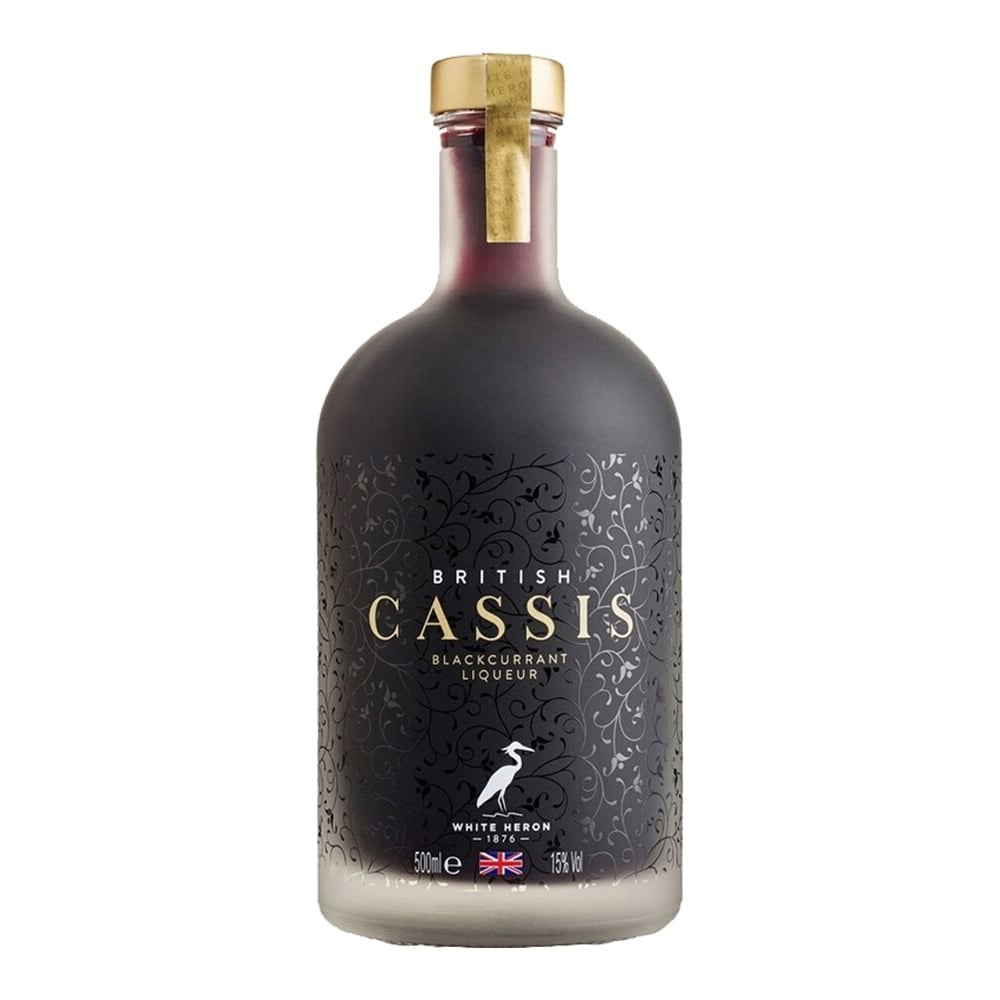Cassis Blackcurrant Liqueurs: Production Methods And Popular Brands

Table of Contents
The Production Process of Cassis Blackcurrant Liqueur
The creation of high-quality Cassis blackcurrant liqueur is a meticulous process, demanding both skill and the finest ingredients. Each step contributes to the final product's distinctive character, from its deep color to its complex aroma and rich flavor.
Harvesting and Selection
The journey begins with the harvest. The timing is crucial; blackcurrants are picked at their peak ripeness, typically in late summer or early autumn, to ensure optimal flavor and aroma. Only the ripest, most perfectly formed berries are selected, often by hand, to guarantee the highest quality. Specific blackcurrant varietals are favored for Cassis production, with some producers using a blend to achieve a desired flavor profile. Regional variations in harvesting techniques exist, reflecting local climates and traditions.
- Timing: Late summer to early autumn
- Selection: Hand-picked, only the ripest berries are chosen.
- Varietals: Noir de Bourgogne, Ben Sarek, and Titania are often preferred.
- Regional Variations: Techniques can vary depending on the terroir.
Maceration and Fermentation
Once harvested, the blackcurrants are gently crushed to release their juices. This crushed fruit then undergoes maceration, a crucial step where it steeps in neutral grain alcohol (typically around 40% ABV). This process extracts the berries' color, flavor, and aroma compounds, infusing the alcohol with the characteristic blackcurrant essence. Subsequently, fermentation may occur, though this is not always the case in all production methods. Controlled fermentation, using specific yeast strains, can further enhance the complexity and depth of flavor. The temperature and duration of fermentation are carefully monitored to avoid unwanted off-flavors.
- Maceration: Steeping crushed blackcurrants in neutral grain alcohol.
- Fermentation: (Optional) Controlled fermentation using specific yeast strains.
- Temperature Control: Precise temperature management is essential for optimal fermentation.
- Yeast Strains: Specific yeast strains contribute to the final flavor profile.
Distillation (if applicable)
While some Cassis blackcurrant liqueurs are produced without distillation, relying entirely on the maceration process to extract flavors, some producers may choose to distill their macerate. This step primarily impacts the final flavor profile, often resulting in a cleaner, more concentrated taste, highlighting specific aroma compounds. Different distillation methods, such as pot still or column still, will further influence the final product’s character. However, many producers avoid distillation to retain the full fruit character of the blackcurrant.
Sweetening and Aging
After maceration (and potentially distillation), sugar is added to achieve the desired sweetness level. The type of sugar used can affect the final product’s mouthfeel and overall balance. Some producers employ an aging process, typically in stainless steel tanks or, less commonly, in oak barrels. Oak aging, though less prevalent than in other spirits, can add subtle notes of vanilla, spice, or toastiness to the liqueur. This aging period allows the flavors to meld and smooth, leading to a more complex and refined taste.
- Sugar: The type and amount of sugar influence sweetness and mouthfeel.
- Aging: (Optional) Aging in stainless steel or oak can enhance complexity.
- Oak Aging: Adds subtle notes of vanilla, spice, or toastiness.
Filtration and Bottling
The final steps involve filtration to remove any impurities and ensure a clear, bright product. Rigorous quality control measures are employed throughout the entire process to guarantee consistency and high standards. Once filtered, the Cassis blackcurrant liqueur is ready for bottling, carefully prepared for distribution and enjoyment.
- Filtration: Removes impurities and ensures clarity.
- Quality Control: Strict quality checks throughout the production.
- Bottling: The final stage before distribution.
Popular Brands of Cassis Blackcurrant Liqueur
The world of Cassis blackcurrant liqueur offers a variety of brands, each with its unique characteristics and production methods.
Crème de Cassis de Dijon
Crème de Cassis de Dijon is arguably the most well-known brand, synonymous with quality and tradition. Its rich history and carefully controlled production methods contribute to its consistently superior flavor profile. This brand is celebrated for its intense blackcurrant aroma, balanced sweetness, and smooth finish.
- History: A long-standing brand with a strong reputation.
- Flavor Profile: Intense blackcurrant aroma, balanced sweetness, and smooth finish.
Other Notable Brands
Beyond Crème de Cassis de Dijon, numerous other producers craft excellent Cassis blackcurrant liqueurs, often using locally sourced blackcurrants and unique production techniques. Brands from France, and indeed other countries, demonstrate the varied expressions of this popular spirit.
- French Brands: Many renowned French producers offer their unique variations of Cassis.
- International Brands: Cassis production is not limited to France; explore options from other regions.
- Key Characteristics: Look for depth of flavor, balance of sweetness, and aromatic complexity.
Choosing a Quality Cassis
Selecting a high-quality Cassis blackcurrant liqueur involves considering several factors. The aroma should be intensely fruity, with a prominent blackcurrant note. The color should be deep and rich, reflecting the quality of the berries used. The taste should be well-balanced, with a pleasant sweetness and a lingering blackcurrant flavor. Avoid products with overly artificial sweetness or off-flavors. Seek out reputable suppliers or brands with a history of quality.
- Aroma: Intensely fruity, with a prominent blackcurrant note.
- Color: Deep and rich, reflecting the quality of the berries.
- Taste: Well-balanced sweetness and a lingering blackcurrant flavor.
- Reputable Suppliers: Look for brands with a strong reputation and history.
Conclusion
From the careful selection of blackcurrants to the final bottling, the production of Cassis blackcurrant liqueur is a process that demands precision and expertise. This article explored the key steps involved, highlighting the importance of quality ingredients and meticulous techniques. We also showcased several popular brands, offering insights into their unique characteristics. Whether you're a seasoned connoisseur or a curious newcomer, we hope this exploration of Cassis blackcurrant liqueur has inspired you to discover this delightful spirit's versatility and exquisite taste. Start your own Cassis blackcurrant liqueur journey today by exploring the brands and recipes available!

Featured Posts
-
 Analyzing Aimscaps Participation In The World Trading Tournament Wtt
May 21, 2025
Analyzing Aimscaps Participation In The World Trading Tournament Wtt
May 21, 2025 -
 Sabalenkas Dominant Performance At Madrid Open Victory Over Mertens
May 21, 2025
Sabalenkas Dominant Performance At Madrid Open Victory Over Mertens
May 21, 2025 -
 Tottenham Loanees Stellar Performance Propels Leeds Back To Championship Top
May 21, 2025
Tottenham Loanees Stellar Performance Propels Leeds Back To Championship Top
May 21, 2025 -
 Record Breaking Foot Race Across Australia
May 21, 2025
Record Breaking Foot Race Across Australia
May 21, 2025 -
 Whats Next For Gumball
May 21, 2025
Whats Next For Gumball
May 21, 2025
